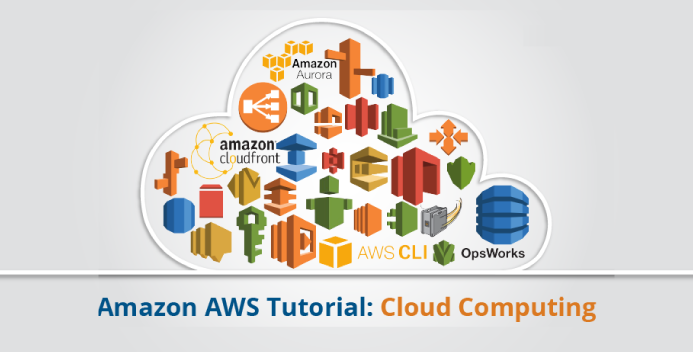
SMTP (Send and Receive Mail Transfer Protocol) is a standard protocol used to send and retrieve electronic mails. It is easy to use and supported by all major email clients. The protocol features line-by–line transmission and an ending-of-data sequence which consists a new-line followed by a stop. The only restriction is that the message body may contain no more than one period. If this happens, the client sends two periods (or more) to the server. This replaces one of the periods. This is known as "dot-stuffing".
Message ID
SMTP uses a Message Identifier to identify the original message. Machine-readable identifiers must follow the msg id specification format. The identifier is typically a word or phrase that summarises the message and lets the receiver know what it is about. An identifier for a message can also contain a comment.
Message body
The Protocol SMTP Messagebody is made up several parts. The SMTP header is a readable string containing a keyword, followed a colon, then a value. Some header keywords must be included, while others can be left out. The SMTP header must contain a To, From and Subject line. The SMTP Header line is a part of the actual mail and differs from SMTP Commands.

RCPT command
The RCPT command for protocol SMTP identifies a mail relay host. This relay host seeks permission from the server before transferring the message. Typically, the server will respond with a 354 response code. Once this permission has been granted, the sender starts transferring the mail data line by line. The contents of the message will be inserted into the mailbox by the recipient SMTP Server.
DATA command
In Smtp protocol, the DATA command signals that a message has begun. The message is composed of a header and a body. If the message has been received successfully, the server may reply with a 250 code.
QUIT command
To end a session using SMTP protocol you can send a QUIT Command. SMTP servers can detect the QUIT request and will send a 221 “goodbye” message. This message ends the TCP connection between the sending device and the receiving device.
RCPT
The RCPT Protocol for SMS is a standard protocol that allows the transmission of SMS messages via the Internet. To encode an SMS message's content, this protocol uses RFC822. The minimum bytes required for this protocol is also minimal. Each SMS message must contain no more than 160 characters at 7-bits and 70 Unicode symbols. You can send longer messages, however. First, split the message in smaller parts. Next, you must encrypt the text message.

DATA
The DATA command triggers the transmission and receipt of the mail message. The message is sent line-by-line to its destination. It ends with an end-of data sequence that includes a new line and a complete stop. A single line can be included in the message body that contains only a period. This is known as dot-stuffing, which happens when the client sends two periods and the server replies with a single period.
FAQ
What is a responsive design web design?
Responsive Web Design, also known as RWD, is a way of designing websites so that content displays on all devices. This includes desktop computers, tablets (tablets), smartphones, etc. This allows users access all features of a website, including navigation menus, buttons and buttons, on one device. The goal of RWD is to ensure that when a user views a site on any screen size, they view the exact version of the site.
A website that sells primarily through eCommerce would be an example of this. You want your customers to be able to purchase products from your store, even if they are viewing it on a phone.
A responsive website will adjust its layout automatically based on what device is used to view it. So, viewing the site on your laptop will look like a standard desktop website. However, if you're viewing the page on your phone, it will display differently.
This means you can make a website that looks amazing on all types of devices.
Can I use HTML & CCS to build my website?
Yes, you can! It's possible! You need to have basic knowledge in web design and programming languages, such as HTML (Hyper Text Markup Language), CSS and Cascading Style sheets (Cascading CSS Sheets). These languages can be used to create websites which can then be viewed by everyone who has an internet connection.
What types of websites should you make?
This question is dependent on your goals. Your website should be able to sell products online. This will allow you to build a successful business. To do this, you will need to create a strong eCommerce website.
Other popular types of websites include blogs, portfolios, and forums. Each one requires different skills and tools. For example, to set up a website, you need to understand blogging platforms such WordPress or Blogger.
You must decide how to personalize your site's appearance when choosing a platform. There are many themes and templates that you can use for free.
After you have chosen a platform, it is time to add content. You can add images, videos, text, links, and other media to your pages.
It is now possible to publish your new website online. Visitors can view your site online once it has been published.
What is a static site?
A static website contains all content stored on a server that visitors can access via web browsers.
The term "static” refers the fact that there is no dynamic feature such as changing images or video, animations etc.
This site was originally designed for intranets. However, it has been adopted by small businesses and individuals who need simple websites with no custom programming.
Because they are easier to maintain, static sites have been growing in popularity. They are much easier to maintain than fully-featured sites with many components (such a blog).
They also load more quickly than dynamic counterparts. This makes them great for those who have slow Internet connections or users with mobile devices.
Additionally, static websites are safer than dynamic sites. There's nothing to hack into a static website. Hackers have only access to data stored in a database.
There are two main ways to create a static website:
-
Using a Content Management System.
-
Create a static HTML web site
Which one you choose depends on your requirements. A CMS is my recommendation if your first website was created.
Why? Because it gives you complete control of your website. A CMS eliminates the need for a professional to set up your site. Upload files to the web server.
You can still learn how to code and create a static website. You will need to spend some time learning to program.
Statistics
- The average website user will read about 20% of the text on any given page, so it's crucial to entice them with an appropriate vibe. (websitebuilderexpert.com)
- When choosing your website color scheme, a general rule is to limit yourself to three shades: one primary color (60% of the mix), one secondary color (30%), and one accent color (10%). (wix.com)
- Is your web design optimized for mobile? Over 50% of internet users browse websites using a mobile device. (wix.com)
- It enables you to sell your music directly on your website and keep 100% of the profits. (wix.com)
- It's estimated that in 2022, over 2.14 billion people will purchase goods and services online. (wix.com)
External Links
How To
Drupal 7 Web Design Tips
Drupal is one of most well-known Content Management Systems (CMS), available today. It was created by Dries Buytaert, a Belgian developer. The name derives its name from Dirk Buijtewaard's and Pierre d'Herbemont's initial letters. Drupal was open-sourced in 2005. Many versions of the CMS have been developed since then. Drupal is still used by many companies and websites all over the globe.
Drupal is popular because of many reasons. It is easy to download and install. It's easy to customize and extend. Third, it is very well documented. It also provides excellent support via forums and IRC channels. It is also extensible through modules. Sixth, it supports multiple language versions. Seventh, it is easily customizable. Eighth, it can be scaled. It is secure. Tenth it is reliable. It is also supported by the community. Drupal is a great choice for your next project because of all these factors.
You may be wondering what makes Drupal different than other CMS systems. It is easy to answer. Drupal is an open source content management system. This means that it is freely downloadable and completely free to use. Drupal gives you total control over your website. You can add and remove pages, change colors, fonts and images, as well as modify videos.
Drupal is the best option if you lack technical skills but want to build a website. You don't need programming knowledge to create your website. To use Drupal, you only need to understand the basics. This will allow you to customize your website as per your requirements.
Another benefit of using Drupal is its many pre-built themes and plugins. These plugins help you to enhance your site's functionality. You can use Contact Form to gather visitor information. Google Maps allows you to display maps on a website. Drupal includes thousands of premade templates. These templates give your website a professionally designed look.
Moreover, Drupal is highly flexible. Drupal allows you to add modules or replace existing ones, without worrying about compatibility issues. If you're looking to integrate social networking into your site, you can do this quickly. You can also set-up RSS feeds, email subscriptions, etc.
Drupal can also be customized. Drupal can be customized with custom fields and forms. You can also manage users. Drupal can be used to create complex layouts.
Drupal is reliable and robust. Drupal is reliable and easily scalable. It offers outstanding security features. Drupal is a great web development platform.